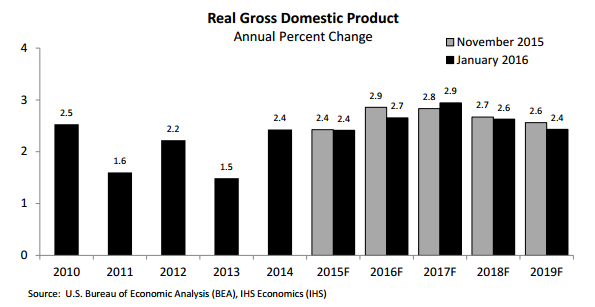Minnesota collected slightly more than expected revenues, and the U.S. economy is expected to continue to grow, according to a quarterly report from Minnesota Management & Budget (MMB).
MMB’s January Revenue and Economic Update finds that state revenues during November and December were $43 million, or 1.2 percent, higher than projected in the November forecast. The largest portion of these better than expected revenues are due to lower income tax refunds, but state economists project that this positive balance may disappear as the processing of tax year 2014 returns is completed.
The national economy continues to improve, with strong employment gains and a national unemployment rate of 5.0 percent in December. The Federal Reserve has noted these economic improvements and in mid-December raised short-term interest rates for the first time in almost 10 years.
National economic growth for 2016 is expected to be 2.7 percent, which is lower than projected in November. Looking further ahead, the economy is expected to grow more strongly in 2017 than projected in the November forecast, and then slightly slower in 2018 and 2019 than the November projections.

The economic forecasters are fairly confident in their projections, and assign a 65 percent probability to their baseline economic forecast. They give a 20 percent chance for a more pessimistic scenario in which international markets contract and a weak U.S. construction sector triggers a short recession; and a 15 percent chance that the economy will be stronger than the baseline prediction, due to better than anticipated productivity, household formation and foreign growth early this year.
The November forecast brought good news for Minnesota, projecting a $1.2 billion positive balance in FY 2016-17. This week’s economic update suggests that Minnesota policymakers can continue to expect a strong positive balance in the February forecast. When they convene for the 2016 Legislative Session in March, policymakers will use the numbers in the February forecast to inform their tax and budget choices.
The forecast also made clear that its projection for economic growth in Minnesota hinges on broader participation in the workforce. Policymakers should use this opportunity to focus on strategies that support workers, such as making child care more affordable so parents can go to work, and expanding access to earned sick and safe time so workers don’t lose their jobs when they need to stay home to care for themselves or a sick family member.
-Clark Biegler